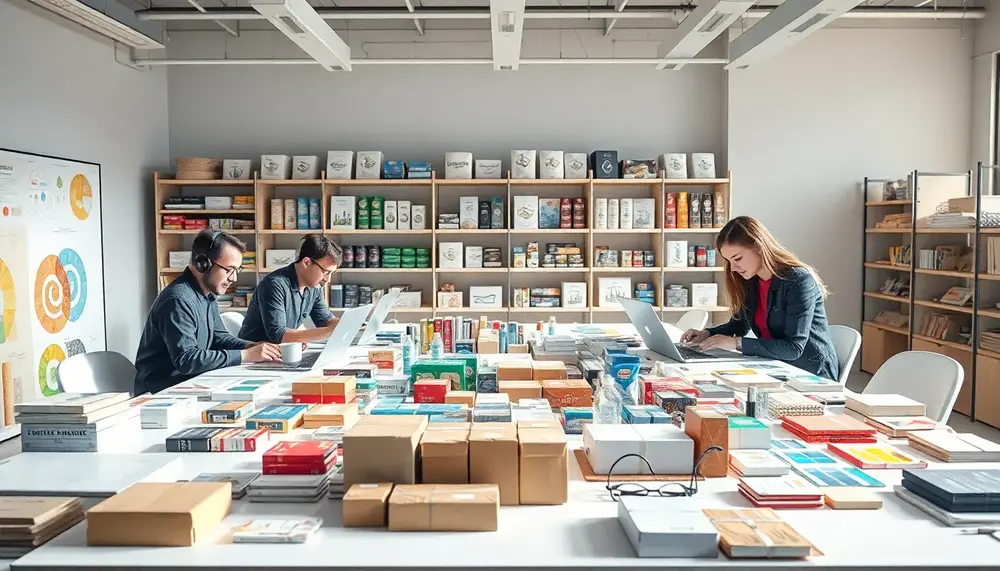Table of Contents:
Effective Strategies in Packaging Design Implementation Modern Technologies Enhancing Packaging Processes Sustainability Practices in Packaging Efficient Logistics and Manufacturing Solutions Tailoring Packaging to Specific Industries Benefits of Streamlined Packaging Processes Examples of Successful Packaging Streamlining
When it comes to effective strategies in packaging design, it's all about finding that sweet spot between creativity and functionality. You want a design that not only catches the eye but also serves its purpose efficiently. Start by understanding your brand's core message and how you want it to be perceived. Then, translate that into a design that resonates with your target audience. Rapid prototyping and mockups can be your best friends here, allowing you to test and tweak until you hit the mark.
Now, let's talk about modern technologies enhancing packaging processes. Technology is like the secret sauce that can take your packaging from good to great. Think about using CAD software for precision design or high-resolution digital printing for vibrant, detailed images. These tools can help you create packaging that's not only beautiful but also incredibly precise and tailored to your needs.
In the realm of sustainability practices in packaging, it's all about making choices that are kind to the planet. This means opting for materials that are recyclable or biodegradable and ensuring your processes minimize waste. Embracing sustainability isn't just good for the environment; it's also a smart business move, as more consumers are leaning towards eco-friendly brands.
Moving on to efficient logistics and manufacturing solutions, the goal is to streamline every step from production to delivery. This involves optimizing your supply chain, ensuring quality control, and perhaps most importantly, reducing lead times. By doing so, you not only cut costs but also improve your ability to meet customer demands swiftly.
When it comes to tailoring packaging to specific industries, customization is key. Each industry has its own set of requirements and challenges. For instance, pharmaceuticals need tamper-proof packaging, while e-commerce might focus on durability and unboxing experience. Understanding these nuances allows you to design packaging that truly meets the needs of each sector.
The benefits of streamlined packaging processes are numerous. Not only do they lead to cost savings and increased efficiency, but they also enhance brand reputation. A well-oiled packaging process means fewer errors, faster time-to-market, and ultimately, happier customers.
Finally, let's look at some examples of successful packaging streamlining. Consider brands that have reduced their packaging materials by clever design tweaks or those that have adopted automated systems to speed up production. These companies often see a boost in customer satisfaction and loyalty, proving that streamlining isn't just a buzzword—it's a business imperative.
Frequently Asked Questions on Modern Packaging Solutions
What are the benefits of using advanced technologies in packaging design?
Advanced technologies, such as CAD software and high-resolution digital printing, ensure precision and innovation in packaging design. They allow for aesthetically pleasing, functional solutions that are tailored to client needs.
How does sustainability impact modern packaging practices?
Sustainability is crucial in packaging, promoting the use of recyclable and biodegradable materials to reduce environmental impact. It aligns with consumer expectations and enhances brand responsibility.
What role does logistics play in packaging manufacturing?
Logistics streamline the manufacturing process by optimizing supply chains, ensuring quality control, and reducing lead times. This boosts efficiency and meets customer demands effectively.
Why is custom packaging important for different industries?
Custom packaging addresses specific industry requirements, enhancing product protection and marketability. For instance, tamper-proof packaging is vital for pharmaceuticals, while durable packaging benefits e-commerce.
What are the advantages of streamlined packaging processes?
Streamlined packaging processes lead to cost savings, increased efficiency, and improved brand reputation. They result in fewer errors, quicker time-to-market, and enhanced customer satisfaction.






